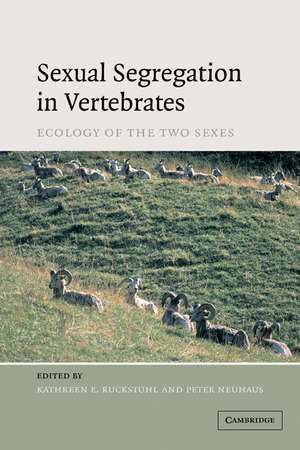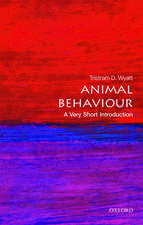Sexual Segregation in Vertebrates
Editat de Kathreen Ruckstuhl, Peter Neuhausen Limba Engleză Paperback – 16 feb 2011
| Toate formatele și edițiile | Preț | Express |
|---|---|---|
| Paperback (1) | 475.20 lei 43-57 zile | |
| Cambridge University Press – 16 feb 2011 | 475.20 lei 43-57 zile | |
| Hardback (1) | 1009.02 lei 43-57 zile | |
| Cambridge University Press – 4 ian 2006 | 1009.02 lei 43-57 zile |
Preț: 475.20 lei
Nou
Puncte Express: 713
Preț estimativ în valută:
90.93€ • 95.18$ • 75.68£
90.93€ • 95.18$ • 75.68£
Carte tipărită la comandă
Livrare economică 31 martie-14 aprilie
Preluare comenzi: 021 569.72.76
Specificații
ISBN-13: 9780521184212
ISBN-10: 0521184215
Pagini: 502
Dimensiuni: 152 x 229 x 28 mm
Greutate: 0.73 kg
Editura: Cambridge University Press
Colecția Cambridge University Press
Locul publicării:Cambridge, United Kingdom
ISBN-10: 0521184215
Pagini: 502
Dimensiuni: 152 x 229 x 28 mm
Greutate: 0.73 kg
Editura: Cambridge University Press
Colecția Cambridge University Press
Locul publicării:Cambridge, United Kingdom
Cuprins
Preface; Part I. Overview: 1. Sexual segregation and the ecology of the two sexes Kathreen E. Ruckstuhl and Tim H. Clutton-Brock; Part II. Concepts and Methodology: 2. Definitions, hypotheses, models and measures in the study of animal segregation Larissa Conradt; Part III. Foraging Ecology: 3. Sex differences in the foraging ecology of large mammalian herbivores Johan T. du Toit; 4. Sexual segregation in seals Ian J. Staniland; 5. Sexual differences in foraging behaviour and diets: a case-study of wandering albatrosses Jose C. Xavier and John P. Croxall; 6. Differences in foraging behaviour and feeding ecology in giant petrels Jacob Gonzáles-Solís and John P. Croxall; Part IV. Predator Avoidance and Reproductive Strategies: 7. Predation risk as a driving factor for size assortative shoaling and its implications for sexual segregation in fish Darren P. Croft, Jens Krause and Richard James; 8. Differences in habitat selection and reproductive strategies of male and female sharks David W. Sims; 9. Sex differences in reproductive strategies affect habitat choice in ungulates Martin B. Main and Johan T. du Toit; Part V. Sex-related Activities and Social Factors: 10. Activity asynchrony and social segregation Kathreen E. Ruckstuhl and Peter Neuhaus; 11. Sexual segregation in ungulates: from individual mechanisms to collective patterns Richard Bon, Jean-Louis Deneubourg, Jean-François Gerard and Pablo Michelena; 12. Sexual segregation in humans Anthony D. Pellegrini, Jeffrey D. Long and Elizabeth A. Mizerek; Part VI. Sexual Differences in Ecology: Comparisons within Different Taxa: 13. Ecological divergence between the sexes in reptiles Richard Shine and Mike Wall; 14. Sexual segregation in Australian marsupials Abigail M. MacFarlane and Graeme Coulson; 15. Social systems and ecology of bats John D. Altringham and Paula Senior; 16. Sociality and ecology of the odontocetes Robert Michaud; 17. Sexual segregation in non-human primates David P. Watts; Part VII. Implications for Conservation: 18. Sexual segregation in birds: patterns, processes and implications for conservation Paulo Catry, Richard A. Phillips and John P. Croxal; 19. Sexual segregation: a necessary consideration in wildlife conservation Esther S. Rubin and Vernon C. Bleich; Part VIII. Outlook: 20. Conclusions and future directions Peter Neuhaus, Kathreen E. Ruckstuhl and Larissa Conradt; References; Index.
Recenzii
In addition to being a solid review, this first synthesis should serve to encourage discussion and promote further research in this area of behavioral ecology. --Choice
Descriere
Sexual Segregation in Vertebrates explores the reasons why this behaviour has evolved and what factors contribute to it.













